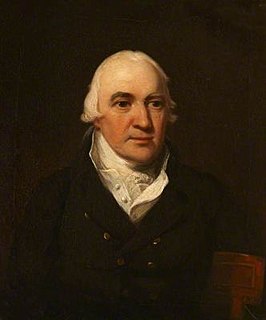Related Research Articles
This is a list of people who have served as Lord Lieutenant of Essex. Since 1688, all the Lord Lieutenants have also been Custos Rotulorum of Essex.

Henry Bayly-Paget, 1st Earl of Uxbridge, known as Henry Bayly until 1769 and as Lord Paget between 1769 and 1784, was a British peer.

George Legge, 3rd Earl of Dartmouth KG, PC, FRS, styled Viscount Lewisham until 1801, was a British politician who sat in the House of Commons from 1778 to 1784.

Brownlow Cust, 1st Baron Brownlow, of Belton House near Grantham in Lincolnshire, was a British Tory Member of Parliament.
Gentleman of the Bedchamber was a title in the royal household of the Kingdom of England from the 11th century, later used also in the Kingdom of Great Britain. A Lord of the Bedchamber was a courtier in the Royal Household; the term being first used in 1718. Lords and Gentleman of the Bedchamber's duties originally consisted of assisting the monarch with dressing, waiting on him when he ate, guarding access to his bedchamber and closet and providing companionship. Such functions became less important over time but provided proximity to the monarch and the holders were thus trusted confidants and often extremely powerful. The offices were in the gift of The Crown and were originally sworn by Royal Warrant directed to the Lord Chamberlain.

Robert Edward Petre, 10th Baron Petre was a British peer, the son of Robert Edward Petre, 9th Baron Petre (1742–1801) and his first wife, Anne Howard (1742–1787).

Brooks's is a gentlemen's club in St James's Street, London. It is one of the oldest and most exclusive gentlemen's clubs in the world.
The High Sheriff of Louth was the Crown's representative for County Louth, a territory known as his bailiwick. Selected from three nominated people, he held his office over the duration of a year. He had judicial, ceremonial and administrative functions and executed High Court Writs.
George William Stafford-Jerningham, 8th Baron Stafford, known as Sir George William Jerningham, 7th Baronet from 1809 to 1824, was a British peer who, in 1824, successfully obtained a reversal of the attainder of the barony of Stafford.
References
- ↑ "Fellows of the Royal Society". London: Royal Society. Archived from the original on 2015-03-16.
- ↑ Proceedings of the Suffolk Institute of Archaeology. Vol. 10. 1900. p. 356.